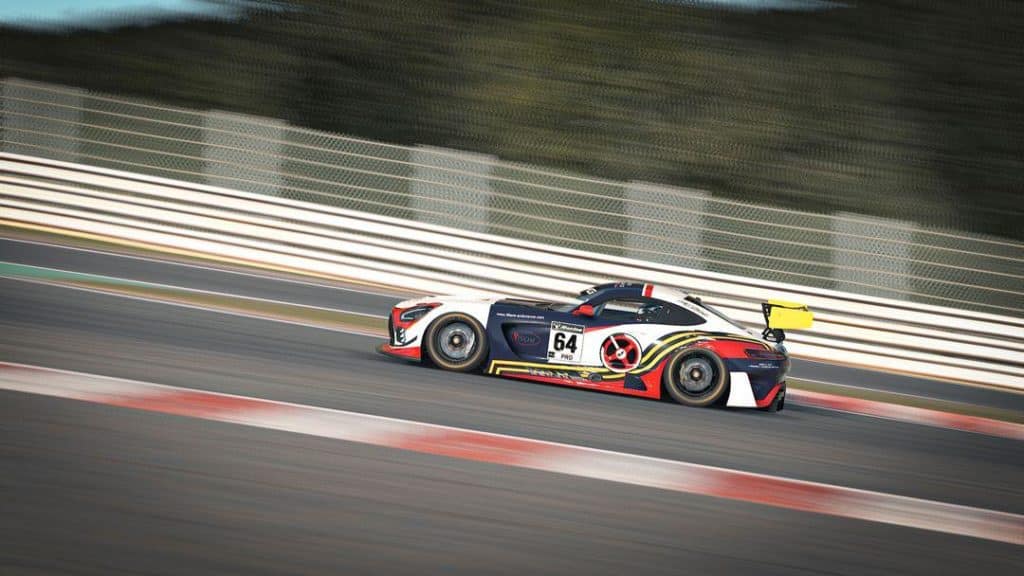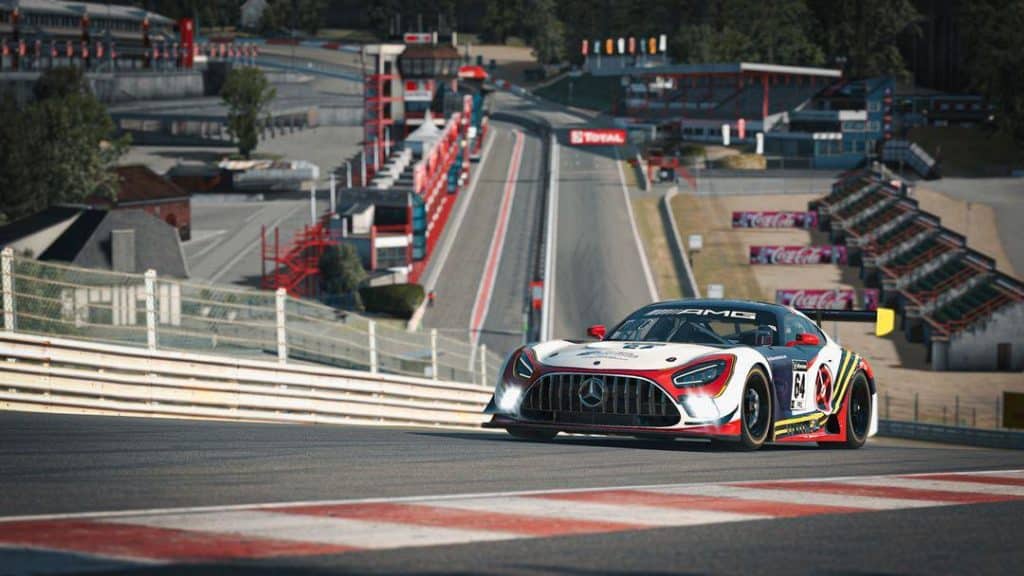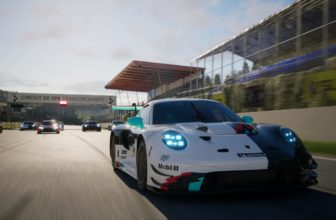
In SimRacing endurance racing, being fast is all very well, but being consistent and adopting an effective race strategy is just as, if not more, important. Whether you’re a simracer taking your first steps in online racing, or a seasoned driver accustomed to eSports events, it’s in everyone’s interest to work on your Simracing strategy.
And for that, there are no secrets: you need the right tools , time and an understanding of the stakes behind each strategic choice. This week, I’d like to invite you once again to meet Mathis from Filière Endurance Esport. He’ll be explaining in detail the steps involved in creating a race strategy. But also the tools he uses with the team! A mine of information which I hope will help you to be quickly efficient on the virtual field 😉
What is the role of the Strategist in SimRacing?
The strategist’s role is first and foremost tooptimize the technical resources available for a race. This involves the setup of the car. You need a set-up that’s safe enough to drive in traffic, manage rubber degradation and accommodate drivers who may not be used to Prototype or GT racing. Sometimes 4 or 5 drivers can share a car on an event.

In this case, Filière Endurance Esport focuses on driving comfort. Because it’s through driving comfort that performance can be maintained. It’s a very different choice from other eSport teams, who have their engineers do their setups to ensure that the vehicle performs as well as possible. It’s then up to the driver to adapt to the vehicle. A choice that doesn’t correspond to FIlière Endurance Esport’s philosophy. But we’ve already talked a little about this in our interview with Thomas, one of the team’s managers.
Then there’s the creation of the crews. The levels between drivers have to be fairly homogenous. That’s how the team can test several set-ups at the same time, with feedback from the drivers that’s equally qualitative on both sides.
Having drivers of very similar levels is also an advantage when it comes to planning race strategy.
What are the steps involved in creating a simracing strategy?
As soon as we have a race event coming up, the first thing to define is which drivers will be in the crews. Then we organize an initial test on the track. Each driver takes a car with a shared setup. We’re not yet running as a crew at this stage. Each driver needs to be able to drive as much as possible to get the maximum feedback from each other.
The strategist will then collect all the drivers’ feedback and modify the setup. This is followed by another test to see if the drivers’ times and feelings are improving, and the operation is repeated over time as necessary.
In the days that follow, the drivers will be racing in short, individual line races on the same circuit every one or two evenings. The aim is to prepare for the event and see how the setup they’ve prepared performs against the competition. If the setup isn’t competitive enough, the team still has a few days to modify it.
It’s during this phase, when the drivers are best prepared for the race, that the strategist collects information on fuel consumption. He waits until as late as possible to collect fuel consumption data, because it’s only when the drivers are well prepared that the strategist will have the best idea of the real fuel consumption during the race. And don’t forget that fuel consumption is not the same during the day as at night, and varies according to temperature. Night sessions are therefore necessary for preparation.
Finally, these races enable us to define the average times of the drivers, which will be used to calculate the average relay time.
How are relay times calculated?
As I said above, the average lap time of each driver is established thanks to the preparation races. To prepare the relay time, you need to take the pace you estimate you’ll have in the race and the stopping time (which also needs to be calculated).
This strategy must then be updated live according to race events. If there’s any damage, or anything else that impacts on the stint time, we note it down 25.26
What tools should I use to prepare a simracing strategy?
To prepare your strategy, you’ll need two tools. A tool to retrieve telemetry and all race data. And a tool to calculate and update your race strategies precisely and simply, in real time.
Which data retrieval tool should you choose?
There are lots of them! Track Titan, Motec, SRT, Hotlaps, some free, some not. The choice is yours.
At Filière Endurance eSport, the team uses Garage 61. This is a free application that retrieves all data (telemetry, consumption, temperatures, lap times, trajectories used, etc.) from iRacing. In this application, you can connect all the team’s drivers to see all their results and retrieve all the data in a matter of seconds.
It’s a mine of information for fine-tuning simracing strategies. To take the example of fuel consumption, the application provides precise information on the average consumption of each driver. Mathis can then enter all these fuel consumption figures on a self-created Excell-type document, and begin to build his racing strategy.
Garage 61 also lets you compare setups. All drivers registered on the platform can share their setups if they wish. Either publicly, or only with their team. They can then serve as a basis for other drivers to work on. Of course, as you’d expect, eSports teams and top-ranked drivers are careful not to share this information publicly.
Use the data to calculate strategy
OK, so we’ve got a tool for retrieving data, now we need to use it to devise a race strategy. At Filière Endurance, Mathis has prepared a Google Sheet document (an equivalent to Microsoft Excell) which automates a lot of the calculations. How is this document organized?
- Race information:
- Circuit
- Start and finish times
- Duration
- Start and finish times in driver’s time zone
- Car :
- Model
- Fuel tank capacity
- Average consumption per lap calculated from the average consumption of each driver.
- Number of laps per stint
- Average lap time
- Pit stop time
- Estimated Stint time (more on this below, it’s a key element)
- Number of Stints for each driver
- Pit stop time :
- Stopping time for refuelling
- Stop for Full Service (rubber, fuel, driver)
- Pit Lane time
- Fuel calculator
- All stint start and end times, pit entry and exit times
The estimated Stint time will condition the whole strategy, which will be calculated minute by minute on the board. By calculating the race ahead minute by minute, Mathis knows exactly how many stints will be needed. That’s why it’s absolutely crucial to have the most accurate data possible. When the job is well done and no event has got in the way of the strategist, over a 24-hour race, the difference between the strategy initially planned and the final result varies by just one or two minutes!
The importance of the fuel calculator and live estimates

Calculating fuel consumption on the basis of data collected from the drivers is a matter of course. But don’t forget that your calculation tool must also be able to do the opposite! In other words, you need to be able to know precisely how much fuel your driver needs to use per lap to save on a stop , for example.
Drivers can then monitor their consumption live via RaceLab or any other display to make sure they’re following the new strategy.
Communication and anticipation
Another important aspect to consider is live communication with the driver. As in real racing, you need to be able to quickly inform the driver if an accident has occurred in front of him, or if a situation requires him to adapt his driving. For this reason, drivers are permanently connected to a Discord channel.
To conclude on SimRacing strategy tools
They provide total live monitoring of the race. When one driver is on the track, another is watching (spotter) and adapting the board. Thanks to all this data, the strategist can define precisely whether the drivers should attack or save. In fact, Mathis told me that this monitoring often enabled them to make one less stop than the other teams. That’s a saving of 40-50 seconds. And it also allows you to put things down and not have to think about strategy when you’re driving and your focus should be 100% on the track.
Preparing and planning different race scenarios is indispensable in endurance racing, but it’s also a huge asset for shorter races. So, simracers, you know what you have to do!
Does strategy really make a difference in simracing?
Yes, and increasingly so! Because the drivers are getting tighter and tighter in terms of times. Even in 24-hour races, you can sometimes find crews finishing just 10 to 15 seconds apart. Setups are very close, and so are times. Clawing back even 10 seconds on a relay can be a real sporting challenge. The strategy then allows you togain seconds that would have been impossible to recover by pure driving.
To give a concrete example: at Monza, the long straights in traffic allow you to ease off the gas pedal 300 metres before applying the brakes. This is called Lift and Coast. And it saves an enormous amount of fuel. And if you manage to save 1 or 2 laps per stint, by the end of the race you’ve saved almost 2 full stints without having lost a huge amount of lap time!
To take the example of Monza, this technique slowed the car by 2 tenths per lap, but enabled us to save 2 stints, saving 1 min 30 to 1 min 40 over the race. And all this would have been impossible without a strategist who collects the data, analyzes it and takes the time to calculate things precisely.
How do you prepare your first simracing strategies?
The first step is to gather the information. The information provided in the game or the fuel calculator integrated into iRacing, for example, will not enable you to create a precise strategy. As a reminder, Garage 61 is a free tool that can be installed in just a few minutes, and the information it collects is more than sufficient to work in good conditions.
Monitoring race data is a highly effective way of improving your driving skills. Because you can literally see what you’re doing when you’re behind the wheel. It shows you your control of the vehicle, the track and your consistency.
Discover Filière Endurance and its eSport team!

As I do every week, I’d like to extend my warmest thanks to the Filière Endurance team for this exchange. I hope you’ve learned a lot about simracing strategies from Mathis. Don’t hesitate to support their team both on the networks and by discovering their website by clicking here! And I’ll see you soon to learn even more about the roles found in SimRacing eSport teams 🙂





